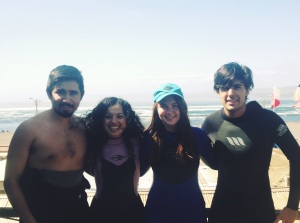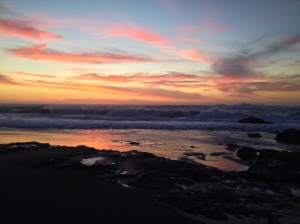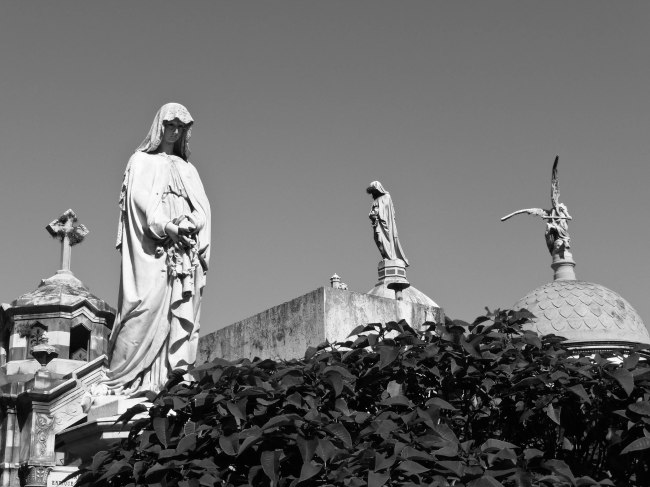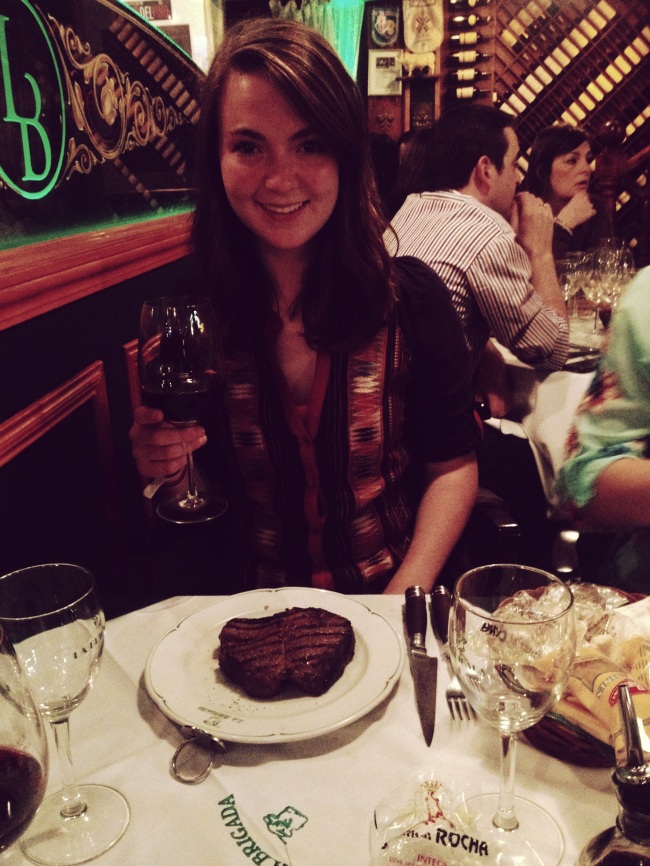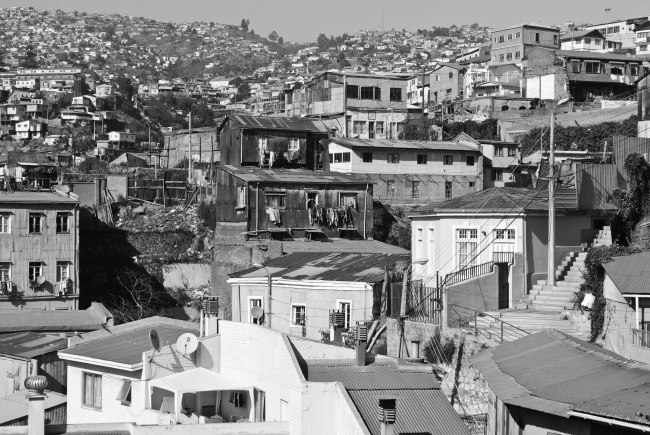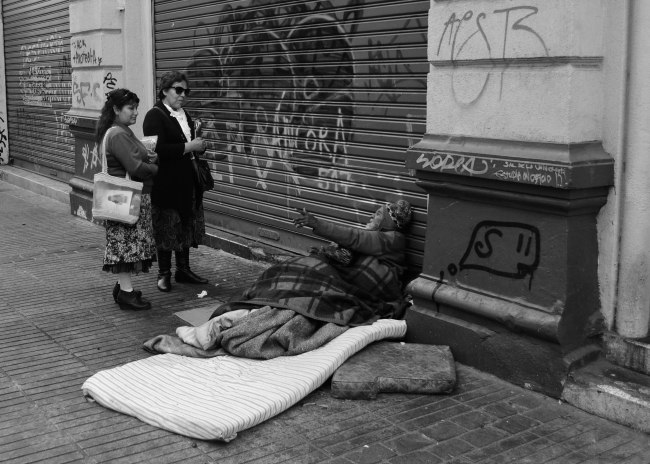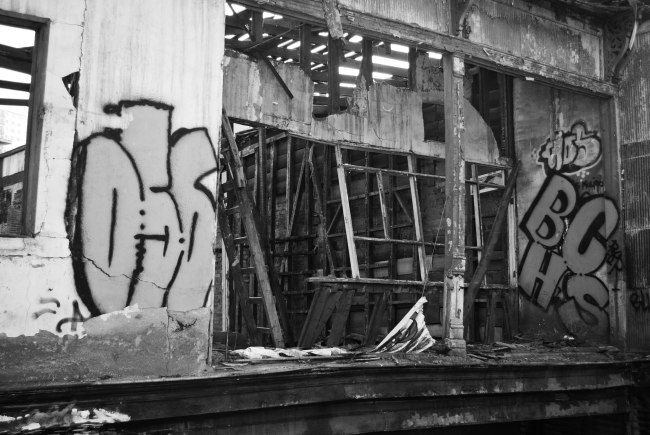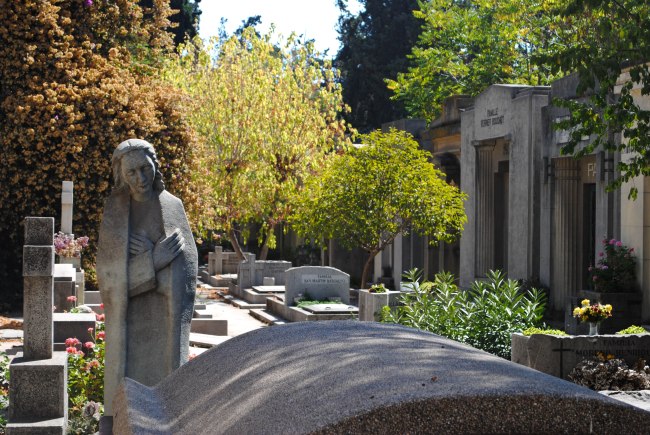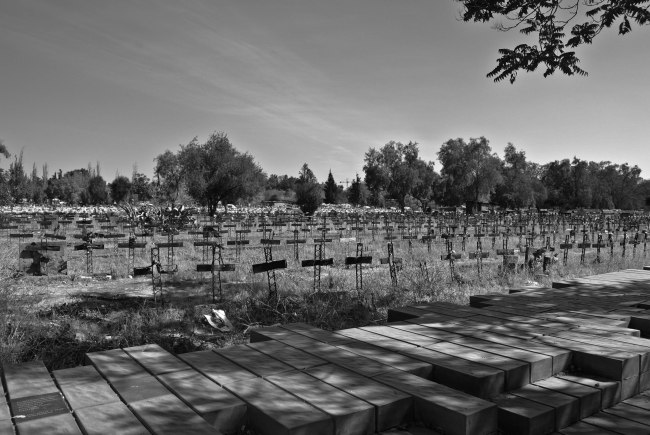October brought with it some of the highest of highs I have had in Chile along with the lowest of lows.
Low: The first week of October, I was recovering from a bad sinus infection. I was going to and from work and school to home and not doing anything else really. I had no energy. I also had no taste buds or a sense of smell, which was no fun. When I went to pay the bill for my appointment with the doctor, the cashier said to me “Hasta luego!” and in my head I was screaming “No! You will not see me later! I will not be coming back here! I will not get sick in my last few months in Chile!!! NO!”
High: In that time, I received a care package from friends back home and that really lifted my spirits. It meant the world to me that my friends were thinking about me and went out of their way to send me snacks and letters.
High: I did some trekking, even when I was sick. My friends and I hiked Alto del Naranjo, but we went on a very cloudy day, so we couldn’t see anything until thirty minutes into our descent.
Low: I’m not going to go into detail on this public domain of what happened and I no longer want to dwell on it, but I was robbed. When it first happened, I thought it was only money, but the next day when I turned on my camera to put the pictures I had taken the day before on my computer, I realized my memory card-of all things that could be taken-was gone as well. When I realized the money was taken, I was angry, but I understood. I understood why the person who took the money from me did-because they were desperate and they were willing to do anything to get what they needed so they could get out of their present suffering, and I was an easy target. Money is material and as much of a drag it is to have had it stolen, it is only money. My memory card is a different story. I almost feel embarrassed to admit this, but I collapsed to the ground in my room, I felt like I had been personally attacked. My memories from the past four years were all gone. I was so devastated that someone would take that from me, because I couldn’t understand why in the world anyone would take that in particular. Thankfully, I have most of my pictures saved on my computer, though some are permanently gone forever since last semester my iPhoto deleted all of my photos.. The worst part about being robbed was not the event but rather the feelings afterward- I was so angry and filled with bitter. I didn’t feel safe. I wanted to go home.
High: Two days after I was robbed, I went with CAUC (Universidad de La Catolica’s foreigner organization) to Pichilemu, the world’s surf capital, to learn how to surf. My greatest regret is that I didn’t go to Pichilemu earlier during my time in Chile, because I absolutely loved it. The first day there, we put on wetsuits, grabbed boards, learned the basics of surfing and made our way into the water. The Pacific along Chile’s coast is pretty cold so I normally don’t swim in it, but being in the water in Pichilemu made me realize just how much I love spending time in the ocean and how much I missed it.
After surfing, I went to an asado (barbeque) CAUC had set up, made new friends, hung out with old friends, ate choripan and drank escudo-Chile’s staple beer. A few of the girls wanted to go watch the sunset on the westernmost beach of Pichilemu, and despite the choripan and beer in my system, we all ran to watch the sun set. As mentioned in my last post, San Pedro de Atacama had the most beautiful sunsets, but Pichilemu is a very close second. Its giant waves crashing onto the beach and the reflection of the sunset in the tide as it made its way back out to sea were captivating.
My friends and I returned to the asado for a bit, and then we all took some time to relax before going out dancing. I’ve never been to a discotheque in a beach town but it was so, so fun. The next day was chill as we went to Punta de Lobos, another beach and I took some time to watch the professional surfers. I am so thankful for my weekend trip to Pichilemu, because I was hurt, angry and full of fear but the sea took care of me.
The day after I went to the beach, I received news that my close friend Jen had been hit by a car in Madrid where she has been studying abroad for the past few months. She suffered a cranial fracture and was put into a medically induced coma. When I first received the news, I didn’t want to be in Chile anymore. I wanted to be in the comfort of my mom and dad’s presence, I wanted to be with the Marquette community, the Intervarsity community, I wanted to be in Spain holding Jen’s hand cheering on her recovery. I felt stuck and I felt helpless. I knew that the only thing I could do in that moment was pray. I’ve been thinking about how God is mysteriously capable of intervening, how He does not abandon us and how He brings good out of evil by His power and His infinite creativity. I have great faith in the creativity of our God and that He is tenderly embracing my friend Jen. Though I am far, I love seeing how the Marquette community has come together to pray for Jen. It gives me great pride to be from a school where people really do care about others. I am so proud of how wonderfully Jen’s recovery is coming along. God is (always) at work.
High (of this semester in general): I have met incredible people from all over the world and made friends with whom I hope to keep in touch with for the rest of my life. They have been there for me through the highs and lows of October as well as September, August and even now in November.
Here are a few pictures from my incredibly short trip to Chiloe:

